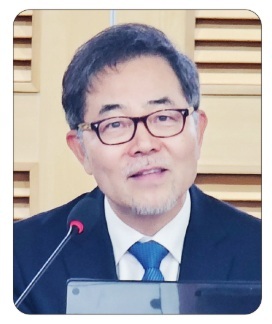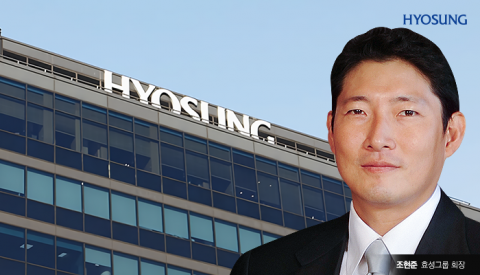【브레이크뉴스 포항】박영재 기자=POSTECH(포항공과대학교)은 생명과학과 황인환 · 김민성 교수, 마두 쿠마리(Madhu Kumari)박사 연구팀이 POSTECH 창업보육센터 입주기업인 ㈜바이오컴 류봉열 대표, 이준호 박사팀과의 공동 연구를 통해 대기에 포함된 이산화탄소를 바다에 녹이고, 바닷속의 금속 이온과 탄산염 형성을 유도해 이산화탄소를 대기로부터 제거하는 데 성공했다고 19일 밝혔다.

POSTECH에 따르면 이번 연구는 환경 분야 국제 학술지인 ‘이산화탄소 활용 저널(Journal of CO2 Utilization)’ 온라인판에 최근 게재됐다.
이제는 지구가 따뜻해지는 단계(global warming)를 넘어 펄펄 끓는 단계(global boiling)에 접어들었다. 그로 인해 전 세계 곳곳에서 슈퍼 태풍, 기록적인 가뭄과 같은 극단적인 기후 현상이 잇따라 발생하는 등 인류와 생태계는 심각한 위기에 직면하고 있다. 이러한 재난의 주요 원인은 인간의 활동으로 배출된 온실가스로 이를 효과적으로 제거하는 기술이 그 어느 때보다 절실하다.
현재 대부분의 온실가스 감축 노력과 정책들은 온실가스 주요 배출원을 관리하는 데 집중되어 있는데, 이뿐 아니라 이미 대기에 축적된 온실가스를 직접 제거하는 것도 중요하다. 탄산무수화효소(이하 CA1))는 기체인이산화탄소(CO2)를 물(H2O)에 녹여 탄산(H2CO3)으로 변환시키는 효소로 최근 효율적인 이산화탄소 제거 수단으로 학계의 주목을 받고 있는데, 기존의 CA는 온도나 염분 변화에 쉽게 불안정해졌다.
POSTECH연구팀은 이러한 한계를 극복하기 위해 컴퓨터 설계 기술을 기반으로 서로 다른 특성을 가진 효소를 결합해 새로운 효소를 만드는 기술을 개발했다. 예를 들어, 내구성은 우수하지만 활성이 상대적으로 낮은 효소와 활성은 매우 높지만 내구성이 낮은 효소를 재조합하여 고온이나 알칼리성 환경에서도 활성과 내구성이 모두 뛰어난 하이브리드(hybrid) 효소를 만들 수 있게 된 것이다.
이를 바탕으로 연구팀은 100℃에서도 24시간 동안 효율을 80% 이상 유지하고, 성능이 10% 향상된 CA 개발에 성공했다. 또, 염분 내성이 강화된 CA를 사용해 공기 중 이산화탄소를 바닷물에 효과적으로 용해했으며, 이산화탄소가 바닷물 속 칼슘(Ca2+) · 마그네슘(Mg2+) 이온과 결합해 탄산염을 형성하도록 pH를 조절하는 기술도 구현했다. 그 결과, 공기 중에서 바다로 이동한 이산화탄소는 다시 대기로 방출되지 않고 바다에 머물렀다. 특히, 이번 연구의 핵심은 생체 촉매인 CA를 활용해 축적된 이산화탄소를 친환경적인 방식으로 제거할 수 있다는 것이다.
POSTECH 황인환 교수는 “연구팀의 기술이 대기 중 이산화탄소 농도를 낮추는 데 실질적으로 기여하길 바란다”라며, “앞으로도 지속 가능한 미래를 위해 더욱 혁신적인 방법을 모색해 나갈 것이다”라는 말을 전했다. 또, ㈜바이오컴 류봉열 대표는 “후속 연구를 통해 효율이 향상되고 규모가 훨씬 큰 장치를 개발한다면 대기로부터 많은 양의 이산화탄소를 효과적으로 제거할 수 있을 것“이라며 이번 연구의 의의를 설명했다.
한편, 이 연구는 과학기술정보통신부 중견연구사업, 교육부 한국기초과학연구소의 지원을 받아 수행됐다.
<구글 번역으로 번역한 영문 기사의 전문 입니다. 번역에 오류가 있을 수 있음을 밝힙니다.>
POSTECH Research Team Develops Innovative Technology to Lower Global Temperature by Dissolving Carbon Dioxide in the Ocean
POSTECH (Pohang University of Science and Technology) announced on the 19th that the research team of Professors Hwang In-hwan and Kim Min-seong of the Department of Life Sciences and Dr. Madhu Kumari, through joint research with the POSTECH Startup Incubation Center resident company Biocom Co., Ltd. CEO Ryu Bong-yeol and Dr. Lee Jun-ho's team, succeeded in dissolving carbon dioxide contained in the atmosphere in the ocean and inducing the formation of metal ions and carbonates in the ocean to remove carbon dioxide from the atmosphere.
According to POSTECH, this research was recently published in the online version of the Journal of CO2 Utilization, an international academic journal in the environmental field.
The Earth has now entered the global boiling phase, beyond the global warming phase. As a result, extreme climate phenomena such as super typhoons and record-breaking droughts are occurring one after another all over the world, and humanity and the ecosystem are facing a serious crisis. The main cause of these disasters is greenhouse gases emitted by human activities, and technology to effectively remove them is more urgent than ever.
Currently, most greenhouse gas reduction efforts and policies are focused on managing the main sources of greenhouse gases, but it is also important to directly remove greenhouse gases that have already accumulated in the atmosphere. Carbonic anhydrase (CA1) is an enzyme that converts carbon dioxide (CO2), a gas, into carbonic acid (H2CO3) by dissolving it in water (H2O), and has recently attracted academic attention as an efficient means of removing carbon dioxide. However, existing CAs are easily unstable due to changes in temperature or salinity.
To overcome these limitations, the POSTECH research team developed a technology to create new enzymes by combining enzymes with different characteristics based on computer design technology. For example, by recombining an enzyme with excellent durability but relatively low activity and an enzyme with very high activity but low durability, it has become possible to create a hybrid enzyme with excellent activity and durability even in high temperatures or alkaline environments.
Based on this, the research team succeeded in developing a CA that maintains over 80% efficiency for 24 hours at 100℃ and has improved performance by 10%. In addition, they effectively dissolved carbon dioxide in the air into seawater using CA with enhanced salt tolerance, and also implemented a technology to adjust the pH so that carbon dioxide combines with calcium (Ca2+) and magnesium (Mg2+) ions in seawater to form carbonate. As a result, carbon dioxide that moved from the air to the sea did not return to the atmosphere but stayed in the sea. In particular, the core of this research is that accumulated carbon dioxide can be removed in an eco-friendly way by utilizing CA, a biocatalyst.
Professor Hwang In-hwan of POSTECH said, “I hope that the research team’s technology will make a substantial contribution to lowering the concentration of carbon dioxide in the atmosphere,” and added, “We will continue to seek more innovative methods for a sustainable future.” In addition, CEO Ryu Bong-yeol of Biocom Co., Ltd. explained the significance of this research, saying, “If we develop a device with improved efficiency and a much larger scale through follow-up research, we will be able to effectively remove a large amount of carbon dioxide from the atmosphere.”
Meanwhile, this study was conducted with the support of the Ministry of Science and ICT's Mid-career Researcher Project and the Ministry of Education's Korea Basic Science Institute.





![[ET시론]속도 패권 시대:중국의 질주, 미국의 반격 그리고 한국의 선택](https://img.etnews.com/news/article/2025/12/31/news-p.v1.20251231.a8c0c6778272483a90114be85ae88998_P3.jpg)
![[인더스트리 솔루션 인사이트] 탄소·품질·안전·설비…기준이 다시 쓰이는 ‘AI 자율제조 전환점’](https://www.hellot.net/data/photos/20260101/art_17673400391648_eb1506.jpg?iqs=0.7476426590526047)